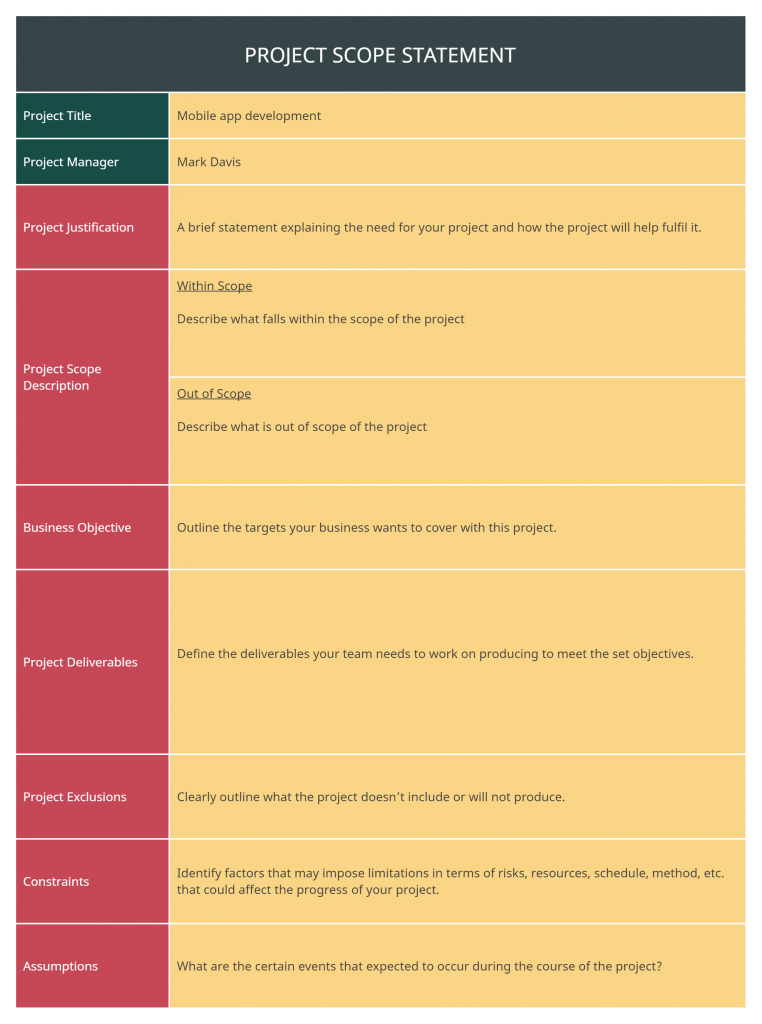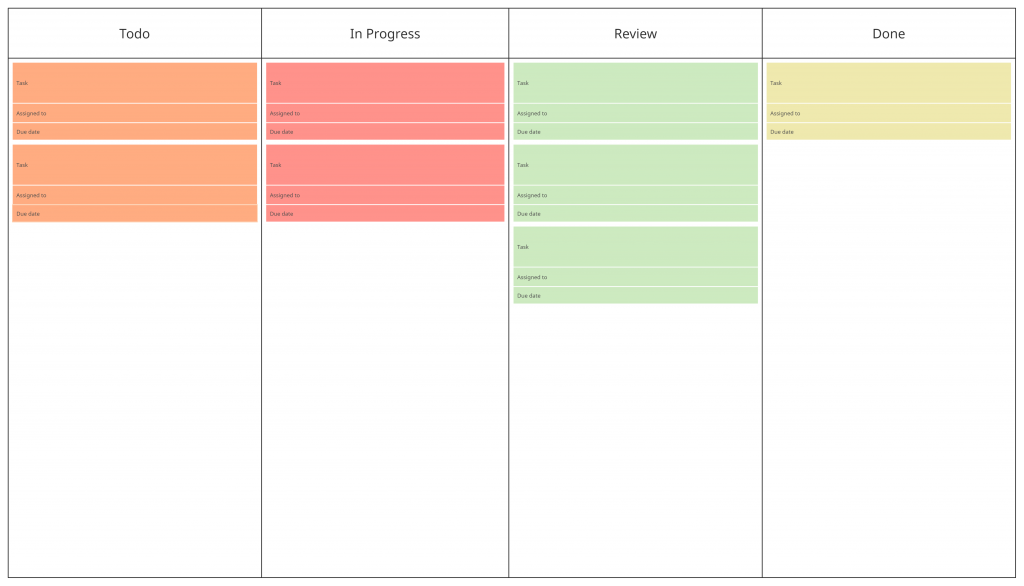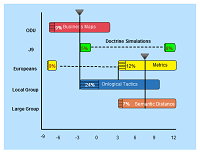If you are a project manager and you have found yourself trapped in a ‘bite off more than you can chew’ kind of situation, it means that you have failed to effectively define the project scope at the planning stage. When a project runs with an undefined scope, you have no idea about the amount of work that has to be completed to achieve its objectives. Consequently, you might fail to complete the project in time.
In this post, we will be looking at what project scope management is and its importance in project planning.
What Is Project Scope Management?
Project scope management encompasses the amount of work – i.e. objectives, tasks, deliverables, and deadlines – fulfilled to complete an assignment. It is important to define the project scope at the beginning of the project to ensure that your team sticks to the plan and avoids the need to perform any unnecessary work to complete the project. Project scope template helps to create a perfect project scope.
Furthermore, in practical scenarios, it is common for projects to have slight course diversions along the way due to modifications in project objectives. A clearly defined project scope will help you navigate through and accommodate such changes effectively.
Why Is Project Scope Management Important?
Defining the project scope is all about efficient project management. A project manager’s job demands attention to detail and managing the expectations of multiple stakeholders.
A properly defined project scope helps project managers stay on top of things when it comes to task tracking and meeting deadlines throughout the project life cycle. When a project is properly tracked, meeting expectations becomes less complicated.
Moreover, project scope management provides a clear understanding of the amount of effort required to fulfil the tasks involved by distinguishing between what and what not to do. It will also have certain controls over changes in project objectives, consequently helping the team to stay on course without pivoting.
Determining the project scope also helps avoid some of the common project management pitfalls such as,
- Falling behind deadlines
- Exceeding the approved budget
- Constant requirement changes
- Mid-cycle project direction changes
More importantly, a well-defined project scope will be the compass that directs you throughout the assignment to meet the expected final outcome.
Project Scope Management Process
Let’s try to understand each step of the project scope management process.
Identifying the Project Requirements
You can’t start a journey without knowing the destination. It is essential to clearly identify what a particular project aims to accomplish, before embarking on it. Conduct discussions with clients and other external stakeholders to determine the exact requirements of the project. This includes project objectives, deliverables, and the budget. You can list out the deliverables in a work breakdown structure template (WBS) according to a hierarchy based on the priority of each requirement.
Sometimes clients tend to have higher expectations without a sufficient budgetary allocation to fulfil them. Prepare a shareable document of all requirements and ensure that all parties involved understand what the project sets out to achieve.
Plan Scope Management
Now that you have identified the requirements, the second step is to prepare a document to plan the project scope. The structure of this document should include,
- The project scope statement
- List of project requirements
- Expected deliverables
- Mapped out process to control changes of the project course

The project scope plan will evaluate and define the project scope, and you can refer to this document at later stages when clarification is needed.
Define the project scope
This is the most important step in determining the project scope. In this step, you need to have the requirements in detail in order to structure the project scope. The scope should contain the ultimate aim of the project.
It is also important to also note down what is not included within the project scope for further clarity. This will ensure that your team is only working on the previously identified requirements. Anything outside the purview will not be considered as part of the project tasks.
Work Structure
The work structure of the project includes a task breakdown and the owner of each task. You can use one of Creately’s kanban board software to do the task breakdown, assign owners to each, and set deadlines. This will help you to keep a good track of your progress.

Validate Scope
Once you have developed the scope, it is important to share it with external stakeholders as well as your team to get the necessary approvals before proceeding. Make sure everyone is on the same page when it comes to requirements, deliverables, and deadlines so that bottlenecks can be minimized. A project manager is the bridge that connects the project team and the clients, so it is your responsibility to make sure that everyone involved clearly understands what the mission is.
Control Scope
Once the project work begins, the project manager should constantly evaluate its progress and make sure that the team does not deviate from the original plan. Controlling scope is part and parcel of project tracking. Furthermore, when clients suggest changes to the original requirements, the project manager should ensure that such changes do not pivot from the project scope identified at the beginning.
Don’t Bite off More Than You Can Chew
An overwhelming load of work is never pleasant. So when you are assigned to a project, always make sure to clearly define the project scope before commencing work. Get your team on board with the defined scope and make them understand why it is important not to deviate from it. This will ultimately help you to become a successful project manager and make sure that projects are completed within deadlines, without exceeding budgets.




